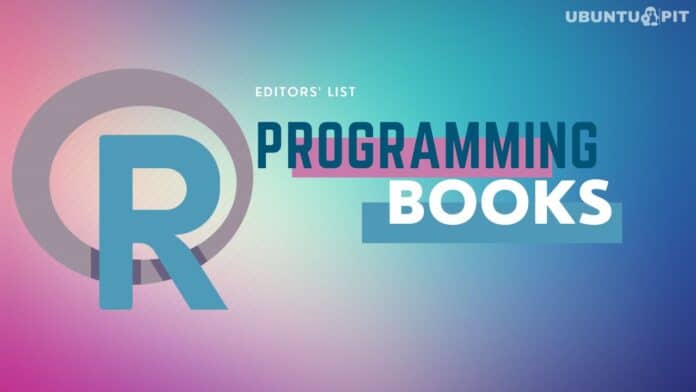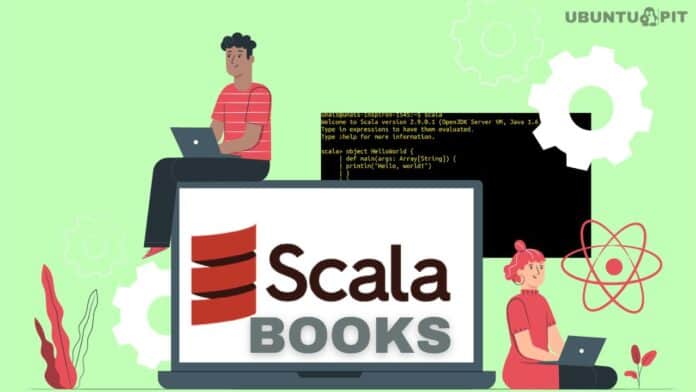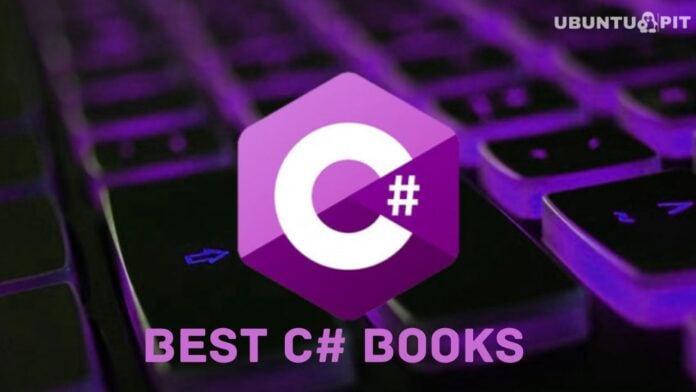If the question comes to your mind whether R is difficult to learn or not, then the answer would come from others who have stated that R is not hard to learn because it is a programming language. It is, in reality, straightforward and defined.
R was intended to be utilized as a statistical apparatus. So, arithmetic and AI were the most significant pieces of R. However, just like anything else, R requires a perfect set of R programming books for you to learn R programming better and more efficiently.
Best R Programming Books for Coders
If you are involved with other programming languages, learning R programming takes only a few days. But for a complete novice, it might exceed up to three weeks or so. You will find the list of the top twenty R programming books that will give you an instant boost to get started and learn R programming effortlessly.
This list contains books that target both novices and professional programmers who want to learn more advanced things and aggravate their field of knowledge.
1. Advanced Object-Oriented Programming in R
“Advanced Object-Oriented Programming in R” is a book for advanced and expert people who are interested in knowing how object-oriented programming is performed using R. This R programming book is expected to present items and classes in R. This book will focus on one of the most important uses of R, which is machine learning and data science using efficient algorithms.

Since this book is for advanced people, to peruse it, you have to know R programming basics, which is the most effective method to control information and compose capacities. But that doesn’t mean that the book will include especially complex R programming, so you do not need to bother with crucial information on how to do useful programming in R.
2. Advanced R
If you are looking for an advanced R programming book and want that book to cover all the advanced topics in the R language in one go, then this is the exact book for you. The author has tried to cover all the recent and developed R language applications in this book. The book has covered a total of 20 different chapters under four main parts.

Some of the contents of this book are data structures, subsetting, style guides, functions, OO field guides, debugging, condition handling, performance, optimizing code, memory, etc. Undoubtedly, this would be a perfect choice of book for learning and implementing advanced R programming in real time.
3. An Introduction to Bootstrap Methods with Applications to R
This book is sorted out so that Part 1 furnishes a presentation with some authentic foundation, a conventional portrayal of the bootstrap, and its relationship to other resampling strategies.
A prologue to R programming is additionally included to set up the students for the exercises and applications that require programming utilizing this product framework. This R programming book covers point assessment, confidence stretches, and speculation testing.

Section 6 spreads a portion of the more significant variations of the bootstrap. Section 7 teaches unique themes, counting spatial information investigation, editing information, subset determination in regression models, measuring ability files, and some new material on bioequivalence. The final part, Chapter 8, covers different models where the bootstrap was found not to fill in true to form.
4. Computational Finance – An Introductory Course with R
This book was intended for advanced undergrad or graduate students in software engineering, arithmetic, business, and non-scholarly financial speculators. It starts with the very basics of introductory Finance.

It then gradually moves on to advanced topics such as correlations, casualties, time series models in finance, Brownian motion, binomial trees, optimization heuristics in finance, etc. We all know how programming languages are now needed in every field of work, and therefore, this is a great choice of book for someone who wants to combine Finance with R programming.
5. Efficient R Programming – A Practical Guide to Smarter Programming
Efficient R Programming is tied in with expanding the measure of work you can do with R programming language in a given measure of time. It is about both computational and software engineer productivity. The book addresses these inquiries and more in 10 independent sections. Each section begins with the rudiments and gets logically further developed, so there is something for everybody in each chapter.

This book is not totally R-explicit. Non-R–programming aptitudes required for productive R programming will also be taught throughout this book. So, if you are looking for something efficient and easy, then this is the go-to book for you.
6. Functional Programming in R
If you are working with statistical computing and graphics, then R programming language is a prerequisite. This particular book would be an amazing choice for learning functional R programming. Before starting with R programming, we need to know about the basics of R language, and this book will help you out with that.
In this book, there are a total of 6 chapters. These chapters contain Function in R, Pure Functional Programming, Scope and Closure, High Function, Filter, Map and Reduce, and Point-Free Programming.

Therefore, you can easily go for this book if you are working in the statistical computing field and using the R programming language.
7. Introduction to Deep Learning Using R
R programming is used for statistical computing, graphical implementation, and deep learning. In this book, the author discusses the deep learning part of using R programming. This book is a proper step-by-step guide for implementing deep learning using the R language.

This book has a total of 12 chapters. These chapters cover various important topics step-by-step. Examples include an introduction to deep learning, mathematical review, single and multilayer perception models, recurrent neural networks, machine learning examples, and so on. If deep learning is your concern, then this is definitely the perfect R programming book for you.
8. Learn R for Applied Statistics
This book is basically focused on software engineers or students who need to learn R programming and use it in statistics. This book will also help advanced candidates who want something to keep as a reference to look back on.

Chapters 1 to 3 will cover the basics of R and its fundamentals. Chapters 4 to 6 teach the different forms of statistics, which are inferential statistics, regression analysis, data visualizations, and descriptive statistics. To utilize R for applied statistics, this book is a must. Moreover, it can also be utilized in the different modeling phases of information or data mining.
9. Learning R Programming
Through this R programming book, you will build up an all-inclusive and predictable comprehension of R as a programming language alongside its tremendous arrangement of tools.
You will gain proficiency with the accepted procedures to support your efficiency, create a more profound comprehension of working with data, and become more optimistic and self-assured about programming in R and tackling issues with the privilege procedures. Therefore, if you are a beginner and feel intimidated by this language, this is the right place for you to start.

If you are a proficient data analyst and need to methodically gain proficiency with the R programming language and related strategies, this book should be your target. A few parts are somewhat advanced for novices, but that does not mean that you have to be a PC master or an expert information examiner to peruse those parts. Having an overall thought of essential programming ideas and a fundamental encounter with information handling is enough.
10. Mastering R for Quantitative Finance
“Mastering R for Quantitative Finance” is a book that is focused on users who know about fundamental financial ideas and have basic programming skills. Regardless of whether you know the essentials of Quantitative Finance and R programming, this R programming book will definitely give you new disclosures.

If you are now a specialist in one of the fields, this book will rapidly get you fully operational in the other field. Nonetheless, if you wish to take up the beat of the parts impeccably, you should be on a transitional level in Quantitative Finance, and you likewise need to have the proper information in R.
11. Hands-On Programming with R
Just as the name suggests, “Hands-On Programming with R” will hold your hand and guide you through the whole process of learning the R language. Learning R programming can be quite tricky and intimidating if you do not have the perfect guide. This book will teach you how to program in R, starting from the very basics.

Not only will this book teach you R programming, but it will also help you to become an expert data analyst and a computer scientist. Thus, you will be taught those programming skills that are most required for a data scientist.
12. R for Data Science
“R for Data Science” is another book that is absolutely amazing for learning data science using R. Now, data science is not a small field that can be learned just by reading a single book. What this book does is that it will give you a strong base on the most crucial topics. There are numerous examples of code in this book, making learning R programming extremely efficient and easy for data science.

The book is divided into four parts, and it contains 24 chapters, where each chapter masters a specific topic. There are also small projects within the book, which makes learning quite challenging and fun.
13. Sams Teach Yourself R in 24 Hours
This is a self-learn R programming language book that tries to portray that you can teach yourself R in just 24 hours, in a single day. Obviously, this is not a book for newbies and beginners but rather a book for professional data scientists and statisticians who want to learn R programming language to aggravate their knowledge in this field.

Although it is a book for advanced people, novices can also take a look at this book as reading it does not require any prior knowledge of R.. Still, yes, those who already have previous ideas and comprehensive knowledge of the basics can easily jump to the later chapters of this book.
14. R in a Nutshell
“R in a Nutshell” is a book of guidance and reference. This book is intended to be a brief manual for R. It is not planned to be a book about statistics or a thorough manual for R. In this book, all the things that R can do are shown with appropriate examples.

If you are looking for something as a reference to stay beside you while you work, then without any doubt, this is the perfect book for you. It has all the information needed to learn and master R. To help you picture it better, this book is divided into four main sections, where each section contains a vast number of chapters.
15. R Programming and Its Applications in Financial Mathematics
R programming language is a concern for those who are working with statistical and graphical language. This is the book where a reader can find the applications of R Programming in financial mathematics. So basically, this book is all about the mathematical implementations of R programming.

The book contains a total of three main sections and an appendix portion. These 3 sections cover various topics like – data structure, probability distribution, hypothesis testing, regression analysis, mean-variance portfolio, derivative pricing, variance reduction methods, etc. This would be an amazing book focusing on mathematical problems using R programming, and keen to learn R programming in this area.
16. R Programming By Example
R programming has had various implementations in recent days. If you want to get started with the R programming language and R programming is quite new to you, this is an amazing option for you to learn R programming through examples.

This book has covered a total of 11 chapters. Some of the topics that it covers are – Introduction to R, Understanding Votes with Descriptive Statistics, Prediction Votes with Linear Models, Communication sales with Visualization, Object-Oriented System to Track Cryptocurrencies, etc. So, this is a perfect book for both initial and advanced learners of R programming.
17. R Programming for Bioinformatics
R programming is used extensively in the data analysis sector and bioinformatics. People who are working on bioinformatics using R programming. This book is introductory to advanced-level problems, so early learners and professionals can find it useful.

This book has a total of 9 chapters with topics like – R language fundamentals, Object-Oriented Programming in R, Working with Character Data, Foreign Language interfaces, R Packages, and so on. So, for people exploring bioinformatics using R, this is the ideal book for them to start with.
18. R programming – Tutorials Point
If you are a beginner in learning R programming and looking for a book that will guide you from the beginning to a complete idea about R programming, this book is the exact choice. This book has been designed for data miners, software programmers, and statisticians who are doing their jobs using R programming.
This book has 45 individual sections of topics covering the whole idea of R programming. Some of the topics are- R- overview, R environmental setup, R basic syntax, R datatype, R variable, R strings, R XL file, R web data, R-bar charts, R-box plots, and lots more. So, this book has tried to cover basic to intermediary-level topics of R language.
19. R For Dummies
Doesn’t the name say it all? Although the book uses the word “dummies,” it does not really mean it. What the name of the book is trying to portray is that this particular book is a masterpiece for novices who know absolutely nothing related to the statistical programming language, that is, R. The book starts with an introduction of the very basic concepts and interface of R and then works its way through more advanced data analysis and manipulation.

The book is divided into six different parts. In which the first part is just an introduction to R and its uses. The second part will teach you to work with text and numbers. The third and fourth parts will teach you to code in R as well as how you can use data structures in R.
The next part is super important, and that is how you can work with graphics in R. The last but not the least part will teach you some exciting things that you can do using R, for which you probably use Microsoft Excel presently.
20. The R Software Fundamentals of Programming and Statistical Analysis
R programming refers to statistical and graphical analysis along with data mining. This book discusses the fundamentals of R software programming as well as statistical analysis. Readers, both beginners and advanced levels, can benefit from this book. This book has been designed with all operating system users in mind, especially Windows users.
This R programming book has three main parts; where the first part talks about the basics or preliminaries. The second part is The Bases of R, and the third part covers Elementary Mathematics and Statistics. Under these three main parts, there are several small chapters. So, no matter if you are a beginner in this field or an advanced learner, you can go for this book without any second thoughts.
Some Final Words
R programming language is extremely efficient when it comes to data analytics and when working with statistical models. Not only does it make the job of a data scientist easier, but it also adds many features to those apps that non-programmers use as well, such as Microsoft Excel. Thus, it is super beneficial and worth learning.
Here, we have tried to provide you with the top R programming books, and we hope that we can provide you with the information you desire to look for. This set of books is important for you to learn R programming effortlessly and also master this language. If this information helped you in any way, please do not hesitate to share it with your friends and family. Best of luck!


